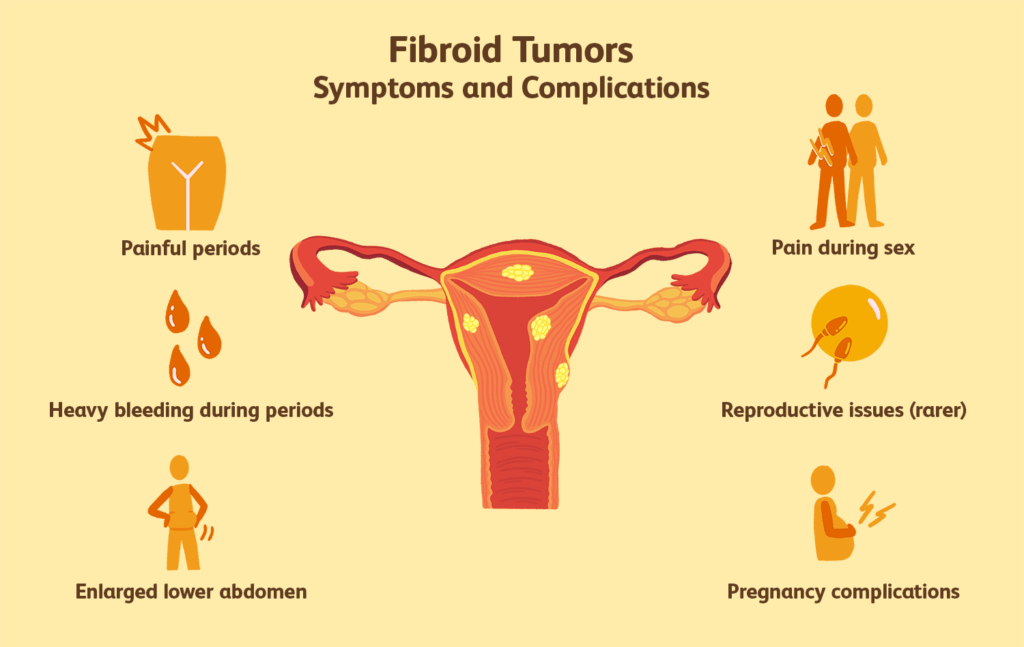Uterine fibroids is often referred to Leiomyomata (benign) are basically overgrowths of connective tissue and muscle. This is most common issue in female pelvis as between 25%-50% of all women sooner or later develop fibroids. The size of the fibroids varies between 1-2mm and 30cm and could grow outside or inside of the uterus whereas some stick out from the uterus. The exact causes of fibroids are unknown, however, one key factor in fueling their growth is female hormone estrogen. Fibroids sometimes increases its size during pregnancy when the levels estrogen increases in the body. However, it shrinks during menopause as the levels of estrogen decreases.
Most of the doctors suggests hysterectomy to treat fibroids which is a surgery in which uterus is removed. However, there are several other treatment plans to manage fibroids; for instance, medical therapies (use of drugs to shrink fibroid or control bleeding) and different surgical procedures to remove fibroids only. Some of the key drugs that helps to manage fibroids and its temporary growth include progestins (to manage menorrhagia/ excessive bleeding); GnRH Analogues (acts like natural hormones to reduce flow of blood to the uterus as well as to individual tumors which decreases its size); Tranexamic acid (Lysteda, Cyklokapron that reduces heavy bleeding). On the other hand, the surgical procedures mainly include myomectomy (fibroids are removed only) and related procedures such as traditional or abdominal myomectomy (incision is made via abdominal wall to remove fibroids), hysteroscopic myomectomy (hysteroscope is inserted through vagina into cavity of uterine and fibroids are removed), and laparoscopic myomectomy (a thin tube is inserted via small incision through or below the navel to view the contents of pelvis and abdomen) which are recommended on the basis of size and location of fibroids. These surgical techniques of laparoscope (through the navel) and hysteroscope (through the vagina) have proved to show faster recovery as compared to a traditional or adnominal myomectomy (through abdominal incision).
Nevertheless, these surgical techniques are often assisted by Vasopressin (substance to constrict vessels) and Gonadotropin Releasing Hormone Analogues (GnRH Analogues) that helps to reduce amount of bleeding and shrinks size of fibroids so that they could be removed easily. Additionally, electrosurgical instruments such as lasers instead of scissors or scalpel to coagulate and cut fibroids have also proved to decrease amount of bleeding during surgical procedures.
Consequently, women could successfully opt for different treatment plans based on size and location of fibroids rather than choosing hysterectomies which is most of the time not needed. However, the risk of all surgical procedures and drug therapies must be considered as they might leave tiny tumors or seedlings that remains undetected during surgery and could grow later. This risk of future recurrence of fibroids is minimized only by hysterectomy.
Thus, it could be said that myomectomy preserve fertility of a woman whereas hysterectomy restricts future child bearing in a woman. Therefore, the selection of the appropriate treatment option depends on the severity of symptoms, size, and location of fibroids and as well as on the patient’s plan to have children in future.
Author: Linda .R. Jones
London, UK
lindarj83@gmail.com

